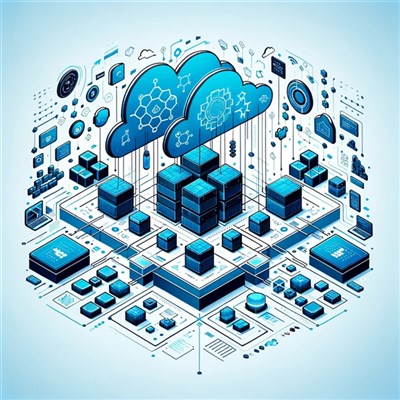.pngL.jpg)
Here are some Best AWS interview questions that you will need to know before applying for AWS-based job roles.
Q1. Define and explain the main types of cloud services and all the AWS products that have been built on them.
- Computing
- Networking
- Storage
- Computing: Lightsat, EC2, Lambda, Auto-Scaling and Elastic Beanstalk.
- Networking: Amazon Cloudfront, VPC and Route 53.
- Storage: Elastic File System, S3, Elastic Block Storage and Glacier.
Q2. What is auto-scaling?
Q3. What is geo-targeting in CloudFront?
Q4. In AWS, which techniques and tools can you use to find out if you’re paying more than necessary? Is there a way to correct this?
- The Top Services Table: This dashboard within the cost management console will show businesses the five services they use the most. It will also show them their total spending on these resources.
- Cost Explorer: These services help businesses analyze and view their usage costs over the past 13 months. It also gives a forecast of expenditure for the next three months.
- AWS Budgets: AWS Budgets allows businesses to budget their services. It enables them to also keep a check on whether they are within budget with their current plan along with the details of service usage.
- Cost Allocation Tags: These tags help businesses to identify any resource that has incurred extra costs in a specific month. You can organize your resources and track your costs using Cost Allocation Tags.
Also Read: What is AWS: Introduction to Amazon Web Services
Q5. Are there alternative tools for logging into the cloud environment besides the console?
- AWS CLI for CMD
- AWS CLI for Windows
- AWS CLI for Linux
- Eclipse
- Putty
- AWS SDK
Q6. Which services can help in creating a centralized logging solution?
Q7. What are DDoS attacks? Which services can be used to minimize them?
- AWS WAF
- AWS Shield
- Amazon CloudFront
- Amazon Route53
- VPC
- ELB
Q8. Consider this situation. While trying to provide a particular service in a region, you can’t see the service within the region. What is the cause and solution to this problem?
Q9: How can a system be set up for monitoring real-time metrics in AWS?
- Changes in the state in EC2
- Auto-scaling lifecycle events
- Console sign-in instances
- Scheduled events
- AWS API calls
Q10. List and differentiate between the types of AWS virtualization.
- HVM - Hardware Virtual Machine: This is hardware that is completely virtualized, which means each virtual machine acts separately from the other. An HVM boots with the execution of a master boot record in an image’s root block device.
- PV - Paravirtualization: The bootloader Paravirtualization-GRUB boots PV AMIs. PV-GRUB loads kernels that are specified on the menu.
- Paravirtualization on HVM: This type of virtualization allows operating systems to take advantage of network and storage I/ O that is available via the host.
ALSO READ: AWS Certifications List and Cost 2022
Q11. Do you know any AWS services that aren’t region-specific?
- IAM
- Web Application Firewall
- CloudFront
- Route 53
Q12. Name the types of EC2 instances categorized by cost.
- Spot Instances: These instances can be bought by bidding. They are cost-effective in the long run.
- On-demand Instances: These are cheap when used short-term, but not in the long term.
- Reserved Instances: These are ideal for businesses looking for instances to use for more than a year.
Q13. Given that you shouldn’t have to copy your key each time you log in, how will you set up SSH agent forwarding?
- Go to PuTTY Configuration on your system
- SSH > Auth
- Enable SSH agent forwarding
Q14. What are Solaris and AIX? Are they available with AWS?
Q15. How should you configure CloudWatch for the recovery of EC2 instances?
- Using CloudWatch, create an Alarm.
- Head to Define Alarm, and then to Actions
- Choose ‘Recover This Instance’
Q16. How can you log in to or recover an EC2 instance in a situation where the key is lost?
- Verify that EC2Config is running
- Detach the instance’s root volume
- Attach this volume to a temporary instance
- Modify the configuration file
- Restart the instance you were looking to recover.
Q17. How can a user be allowed to get access to a specific bucket?
- Categorize existing instances
- Define how each authorized user can manage particular servers
- Lockdown any tags
- Attach all policies to IAM users
Q18. If VPC is unable to resolve a server via DNS, what could the problem be, and how can it be fixed?
Q19. Define and describe some VPC security features and products.
- Security groups: These act as firewalls for EC2 instances. They control outbound and inbound traffic at an instance level.
- Network access control lists: This feature covers subnets like a firewall, controlling outbound and inbound traffic at a subnet level.
- Flow logs: These logs capture outbound and inbound traffic from your VPC’s network interface.
Q20. How can Amazon VPC be monitored?
- CloudWatch and CloudWatch logs
- VPC Flow Logs
Q21. How can an existing instance be added to new Auto Scaling groups?
- Open the EC2 console
- Select the desired instance from the Instances menu
- Actions > Instance Settings > Attach to Auto Scaling Group
- Select the new Auto Scaling group
- Attach your group to the instance
- If needed, edit the selected instance
- Once this is done, the instance can be added to the new Auto Scaling group.

min.pngM.jpg)

(1).pngM.jpg)
(1).pngM.jpg)
min.pngM.jpg)
COMMENT